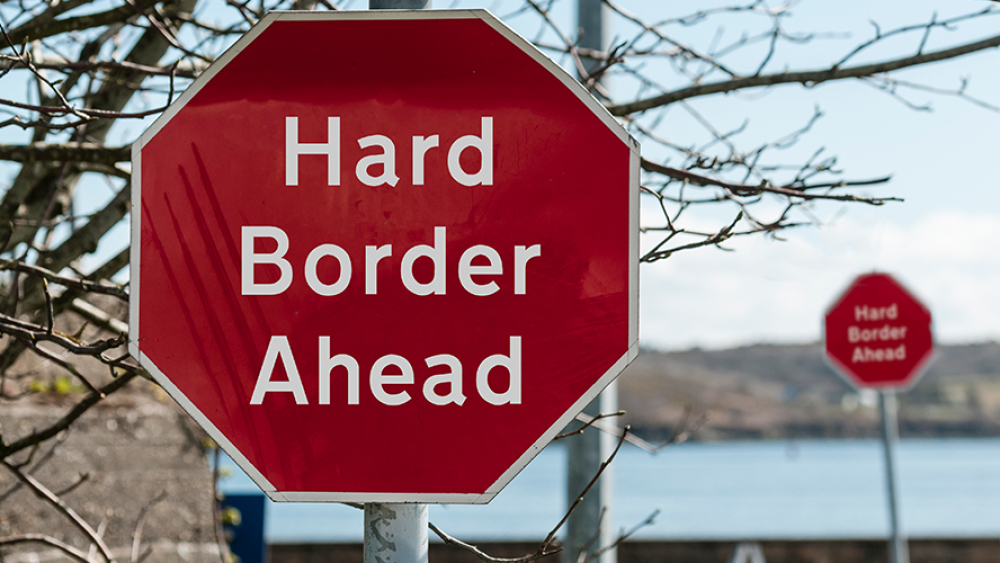Brexit: Borders and backstops - what are the issues?
09 Nov 2018

As has been atop the Brexit discussion agenda for weeks, the process has been held up by the issue of the Northern Irish border. In spite of Theresa May insisting 95% of the Brexit deal is agreed, the fact remains that, as EU chief negotiator Michel Barnier says, “Nothing is agreed until everything is agreed.” In other words, unless the border issue can be solved, we will be heading for a no-deal.
What is the issue?
In short, the problem is that Northern Ireland’s border with the Republic of Ireland is the only land border with the EU. As the UK may withdraw from current trade agreements, issues around checks of people and goods have been raised. Conventionally, where the EU has a border with countries outside the customs union or single market, there are ‘hard border checks’ – essentially some kind of outpost where who or what is passing through is registered with the countries they are leaving and entering.
While this isn’t a wholly offensive notion in itself, there are problems specific to the Northern Ireland/Ireland border that make this notion unpalatable. During the Troubles 20 years ago, a plethora of outposts, checkpoints and division lines were set up to limit the violence. In the agreements that ended the violent conflict, it was decided that all indicators of borders should be removed to facilitate peaceful living.
Clearly, creating borders would be a provocative measure. While peace has lasted for a significant time, there is still tension in the region.
What are the proposed solutions?
The EU has stated that the only way they can foresee the continuation of frictionless trade between Ireland/Northern Ireland is if Northern Ireland were to stay in the customs union. In this case, both the Republic of Ireland and Northern Ireland would be using the same trading rules and a border would not be necessary.
However, this proposal has been touted as been unacceptable by the UK Government as it would restrict UK trade deals with other countries outside of the EU, a redline for Theresa May’s Government. Similarly, the Democratic Unionist Party (the pro-UK Northern Irish party that currently has a supply and confidence agreement with the government) also say that they would not accept an agreement that treated Northern Ireland differently from the rest of the UK. Equally, a huge portion of goods and services produced in Northern Ireland goes to the Republic of Ireland, and this would be severely inhibited by any kind of hard border.
The ‘backstop’
To this end, the UK government has presented several ‘red lines’ to the EU outlining how the UK could not accept a Brexit deal which put up these borders.
Both the EU and the UK have not moved on their stance yet – at least in public. There was a suggestion that the UK might agree to Northern Ireland remaining in the single market and customs union until a time that this issue is solved. This is what is known as the ‘backstop’. This could mean the UK would be subject to the EU’s agreement on whether Northern Ireland could pull out of a customs union at a later date. As such, there is heavy resistance to this option by many pro-Brexit voters and the Government has not committed to this potential deal-maker.
The ‘backstop to the backstop’
Nonetheless, the government also suggested a solution to the worries of the pro-Brexit voters, or a ‘backstop to the backstop’. This is the proposal that the UK would join the customs union but only for a set amount of time. They assumed that within this time, the border issue would be solved. It is unclear what the government would do if the issue hadn’t been solved by then and, on this basis, the government’s ‘backstop to the backstop’ is similarly unpopular with Brexit supporting MP’s.
So, the solution to the problem remains unclear. Some sources suggest that the EU is beginning to move towards the UK’s position, finally taking to heart the UK’s insistence that it cannot accept a border scenario.
However, there is no public agreement, meaning there is no agreement. To get a deal, someone needs to budge, or everyone needs to fudge…

Please login to comment.
Comments